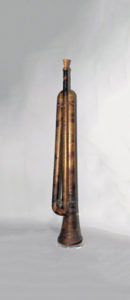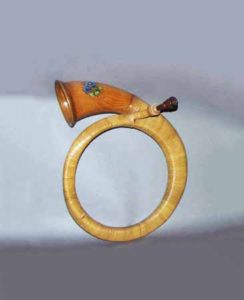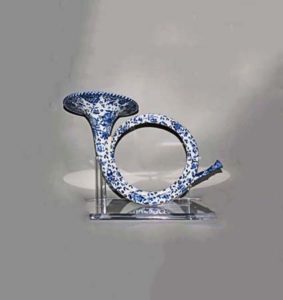Natural Horns / Orchestral Horns
The natural horn is a musical instrument that descended from hunting horns. It consists of a mouthpiece at one end, long-coiled tubing without valves, and a large flared out bell at the other end. It is also the predecessor to the modern-day orchestral (French) horn. Throughout the seventeenth and eighteenth century the natural horn evolved by widening the bell and lengthening the tubes. There were also extra crooks manually inserted by the horn player to change keys. Another method of adjusting the pitch was by “stopping” the horn with adjustment of the right hand.
The orchestral (French) horn is a brass instrument made of tubing wrapped into a coil with a flared bell and valves (rotary or piston). The double horn in F/B♭ is the horn most often used by players in professional orchestras and bands. In the US, the two most common styles (“wraps”) of double horns are named Kruspe and Geyer/Knopf, after the first instrument makers who developed and standardized them.



